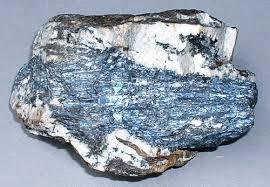The antimony market is witnessing dynamic changes due to increasing demand from various industries, including flame retardants, batteries, and metallurgy. The competitive landscape of this market is shaped by key players, production trends, regulatory policies, and technological advancements. In this article, we will analyze the competition in the antimony market, major market drivers, and future opportunities.
Market OverviewAntimony (Sb) is a metalloid primarily used in flame retardants, alloys, and lead-acid batteries. The global market is influenced by mining activities, geopolitical factors, and supply chain disruptions. China remains the dominant producer and exporter, controlling a significant share of global antimony reserves. However, environmental regulations and geopolitical tensions have created fluctuations in supply and pricing.
Key Players in the Antimony MarketSeveral multinational companies and regional players contribute to the competitive landscape. The major players in the antimony market include:
Hunan Gold Group (China)
United States Antimony Corporation (USAC) (USA)
Mandalay Resources Ltd. (Canada)
Tri-Star Resources (UK)
Huachang Antimony Industry (China)
These companies focus on strategic expansions, mergers, and acquisitions to strengthen their market position. Some are investing in sustainable mining practices to comply with stringent environmental regulations.
Market Competition and DynamicsThe competitive nature of the antimony market is influenced by several factors:
Supply Chain Disruptions: Geopolitical factors, trade restrictions, and declining mine production in key regions impact market stability.
Price Volatility: Fluctuating raw material prices due to changes in production levels affect competition among market players.
Technological Advancements: Companies investing in innovative extraction and refining technologies gain a competitive edge.
Regulatory Environment: Stricter environmental policies affect the operations of antimony producers, leading to supply constraints.
Market Demand Trends: Increasing demand from flame retardant applications and electric vehicle (EV) battery production is reshaping market strategies.
Growth Factors in the Antimony MarketRise in Flame Retardant Applications: Antimony trioxide is widely used as a flame retardant in plastics, textiles, and electronics.
Growing Demand for Lead-Acid Batteries: The automotive and energy storage sectors are boosting demand for antimony alloys.
Expansion in Electronics and Semiconductor Industries: Antimony's use in semiconductors and microelectronics is expected to grow.
Sustainability Initiatives: Companies focusing on eco-friendly mining and recycling will gain long-term advantages.
Challenges and RestraintsDespite promising growth opportunities, the antimony market faces several challenges:
Limited Reserves: The global antimony supply is concentrated in a few countries, making it vulnerable to disruptions.
Environmental Concerns: Antimony mining and processing generate toxic waste, leading to stricter environmental regulations.
Competition from Substitutes: Alternative materials such as aluminum trioxide and zinc borate are being explored as replacements for antimony in flame retardants.
Future Market Outlook and OpportunitiesThe global antimony market is expected to witness moderate growth in the coming years, with increasing investments in sustainable mining, recycling, and alternative supply sources. Key opportunities include:
Recycling Initiatives: The development of efficient recycling methods for antimony-containing products can ensure a stable supply.
Exploration of New Reserves: Investment in untapped regions can diversify supply sources and reduce dependence on major producers.
Strategic Partnerships: Collaborations between mining companies and end-users can enhance market stability and innovation.
Technological Advancements: New extraction techniques and environmentally friendly processing methods can shape the future market landscape.
Conclusion:-The competition in the antimony market is shaped by key players, supply chain dynamics, and evolving demand trends. While challenges such as supply constraints and environmental concerns persist, growth opportunities exist in recycling, new reserve exploration, and technological advancements. Companies that invest in innovation and sustainability will likely emerge as leaders in the antimony market.



